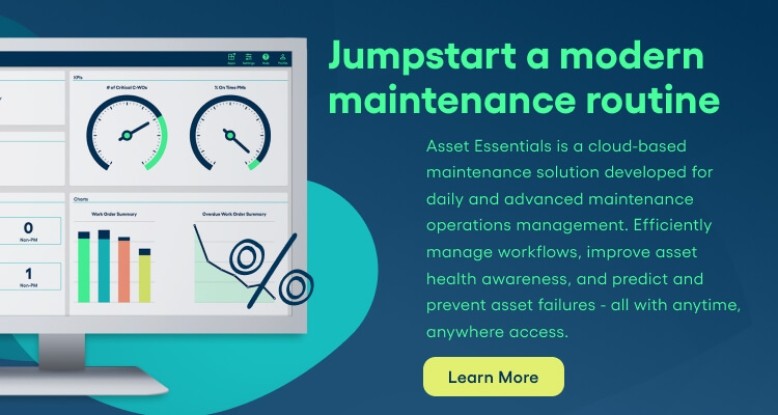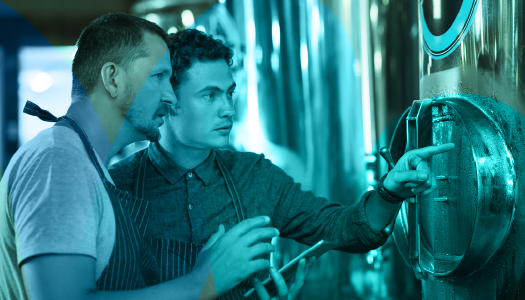Future Technologies in Manufacturing - Digital Twins

“There is hydraulic oil all over the floor next to my press brake!”
This is not the emergency call you ever want to hear. But in this case, we don’t need maintenance to rush over with a clean-up kit and ready to repair – the entire situation is occurring on a computer screen. Instead, the simulation is proving we need to expedite a preventive action to stop this from happing in the physical world.
“Digital Twins” (DT) allow us to virtualize a factory, production line, individual asset all the way down to sub-asset or even part – all on a computer, tablet or mobile device. Once a DT is created, it “runs” alongside the actual physical asset. Even cooler, the same IoT (Internet of Things) data we are getting from the sensors in the physical world can be ingested by the DT to help us see potential problems even earlier, greatly aiding in predictive maintenance strategies.
How Does Digital Twinning Work?
As digital technology continues to evolve, we can make a copy of our environment where we can plan, test and improve – far safer and less expensive than the physical world. This has positive implications that allow manufacturers to consider everything from growth/scale strategies to avoiding profit killing downtime due to maintenance issues. DT relies on quality modeling of the assets and systems being monitored. Although still early, this software is becoming more prevalent. In a perfect world, the DT should be a very close replication of the real physical asset. It should also have the same inputs that the physical asset has – often in real-time – so it has the best chance to catch problems early. Creating a DT requires lots of data - design specifications, production processes or engineering information. This continues to be enhanced by having production-related data such as equipment, raw materials, parts, methods and quality information. Real-world operational inputs are key, including production feedback, historical analysis and even CMMS
maintenance records. How Do Digital Twins Support Superior Maintenance? Industry 4.0 technologies – including IoT and DT allow maintenance teams to catch problems proactively – far ahead of a run-to-fail, downtime laden posture. Downtime is a profit killer – DT can help. Design, test and implement better maintenance policies – before the asset is even in production.
One of the super cool things about DTs is that you can “see” an asset, production line or even an entire factory floor in action before it exists in the physical world.
Depending on the quality of the DT, full simulations can be performed testing a variety of inputs and conditions – this information can be used to assist in asset design, setup, configuration and implementation to avoid those “what were we thinking” situations caught much later in the physical world. Utilizing historical data – including maintenance, production and even environmental data, especially aided by artificial intelligence and machine learning, can fine tune the results. You can further this benefit by helping train technicians, stocking parts and other valuable preparation in a safe manner.
Have your DT “live” alongside your physical asset in the live production environment. You can have the same IoT and other manually entered information ingested in the DT where maintenance operations will have the opportunity to spot problems that could initiate a physical-world corrective or preventive action to remedy. DT is another tool in your arsenal to help assets run smoother with better uptime. Having a DT, especially with the same inputs from the real world, will help engineers design better future production lines and assets. Having a safe digital environment will offer faster, safer and less expensive modifications to existing and future asset/system implementation.
What are the challenges of digital twinning?
We are still in the early stages of full-scale digital twin adoption. Work progresses in all areas – modeling and simulation, IoT frameworks, ability to integrate (physical and digital worlds) and other challenges. Progress will be quicker in specific industries – power generation for example. Hardware and software technology will continue to improve, making DT technology more readily available to all industries.
Where is the return on investment?
Your organization needs to online a new extension to a product line that has less downtime and better-quality production. Considering these two options, which do you think would be less expensive, quicker and faster?
Option 1: You design, purchase and build the line in your plant based on existing specs, tweaking and testing the physical elements.
Option 2: You design and build the line in your digital twin environment, tweaking and testing the elements.
It takes real design work, time and energy to build in the digital world – but the actual costs are dramatically lower and the ability to test and tweak exponentially easier. The result in the physical world will be superior. Plus, now you have the DT to continue the journey to have benefits of catching maintenance issues earlier, stretching the life of the asset and keeping production quality at best.
Results from using Digital Twins:

Conclusion
Digital Twinning is an amazing technology that will gain further adoption as the technology becomes more available and we have more operations leaders understand and can utilize. All aspects of production will benefit from DT – especially maintenance. Catching problems early is the goal of all maintenance departments – DT is extremely promising on that front. The cost and time savings are undeniable. Manufacturers need lean and efficient tools and methodologies to compete in this smart-factory world we are quickly moving toward. Digital Twins are part of that future.




